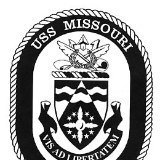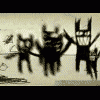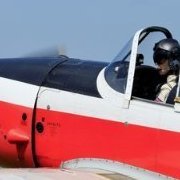Search the Community
Showing results for tags 'Prototype'.
-
I've been hammering along on my Tamiya Meteor build and took a few progress pics yesterday. My first attempt at scratch-building a seat belt/harness was awful. I recalled a tutorial on Philip Flory's website that showed his technique for simple belts and buckles but alas, it's now in the paid subscriber section, which I am not unfortunately. But I did find a YouTube video in which a gentleman uses the exact same method and that really refreshed my memory about the technique. Well, I still have a long way to go in getting them to look just like I want. They are too much out of scale. But, they are an improvement and they were cheap. Made from masking tape and fuse wire, I'm hoping they'll be passable under a closed canopy. I still need to do a bit of tweaking on the buckles and adjusters, trimming, shaping and squeezing a little more. The two lap belts: Shoulder harness: The seat is merely sitting in place in these pics. Once the lap belts are on, it will be glued into the cockpit tub and the shoulder straps glued to the seat back. The rear of the bulkhead will get a small cover plate to conceal the back of the shoulder harness. I cut a slot through said bulkhead and glued a tiny bit of fuse wire across it. My plan was the thread the shoulder belts over and through that wire, draping them down the seat front. That proved too ambitious; the wire broke away as I fiddled with the ends of the straps and finally they were pulled down and taped in place against the rear of the bulkhead. Speaking of "fiddly"; dicking around with those tiny wire buckles and strips of tape was damned fiddly even working beneath the magnifier light! I know they're "out of scale" but they are just about at the limit of my eyesight and hand dexterity. The landing gear is finished and ready. Gear doors are done as well: One wheel is separate from each tire and the other side requires careful painting. I used masks from a Maketar wheel masking set for the first time and they seemed to work well. I have used a circle template when the rim was raised enough from the tire and I've also used very thin paint to fill the edge between wheel and tire, running the paint around the wheel and then filling in with multiple coats, with thicker paint. But this time I tried something new and it actually worked. The wheels are painted Testor's flat steel (little 1/4 oz. square bottle) mixed with silver and the tires are Humbrol dark grey 32. It's the closest "out of the bottle" color for tires that I've found. Tamiya provides a ballast weight for the Meteor that neatly fits into a space on the fuselage belly. I've read that that was barely enough weight to prevent tail sitting so I looked for space for additional weight. I found it beneath the cockpit "cowling". I mixed lead shotgun pellets into two-part epoxy and spread that paste under the cowl part. In the pic, there's a gap between that cowl and the fuselage. Well, with just a tiny press, that cowl almost snaps in place flush as can be. An impressive bit of Tamya engineering: The fuselage, together and awaiting priming and final seam filling: I'm hoping I'll have time to finish the cockpit today and get it installed. Then, I'll be ready to assemble the wings and get them attached. At this point, there's still a lot of work left to do but progress has been made at last! Thanks for looking in, having a peek, and yes, comments are welcomed!
-
Hi gents! While waiting for the primer to try on the endless sanding repetitions on my YF-105A Thunderchief conversion, I a going to do something I rarely do, start a second project at the same time. Well actually, I do it all the time, but I just never publish it at the same time! Nevertheless, I'll begin first with the backstory. Several years ago, I ran across an interesting conversion by a modeler named Bill Dye. I never met Bill, but I he apparently loved to kitbash and convert, like I do. What I first found was his YF-96A conversion YF-96A Build I decided I'd have to build one of those, one day, but as is my norm, other things intervened. Sometime later, I ran across this pic: : The bottom aircraft is actually the second YF-84F, modified with a solid nose and wing intakes. I decided I'd like to build on of those, because I had never even seen a picture of one before. While researching THIS aircraft, I ran across another build started by Bill Dye of the same aircraft. Sadly, he never posted finished photos of the build, and I do not know where he is, or how he is doing. In any event, he (unknowingly) encouraged me to do this project. Here is a link to his version: Bill Dye's YF-84F While my research pointed me in a slightly different manner of conversion than Bill's, I will still use his technique of chopping out the needed cockpit cutout as a whole panel, and transferring it from the Heller F-84G kit to the Testors/Italieri RF-84F kit. Which is exactly how I'll begin, sawing two cuts 58mm apart across the Heller fuselage, and then laying out tape the long way to mark those cuts. The front saw cuts were 12mm wide, centered on the fuse join line, and the rear saw cut was 14mm wide, also centered on the fuse join. Almost all my panel line cuts are made the same way. First a tape line is laid out if needed. Then, a sharp #11 X-Acto blade is run along the guide, followed by a couple of passes with my Trumpeter scriber, and then finally, the saw: This usually leaves me a nice, clean cut-out, reducing sanding later. Next, the same procedure is repeated on the T/I RF-84F fuse, using the same measurements: Of special satisfaction to me is the fact that this is the same RF-84F kit that I had previously swiped the turtledeck from to build the YF-105A, the other work still in progress, which is why the little triangle of plastic is missing from above. Saves a kit! There are a couple of reasons why I decided to modify the RF-84F vs the Heller kit as Bill did, and I'll explain these later. Also at this time, I glued all the camera windows in place of the RF-84F for added strength. (Turns out only the single window further back really mattered!). Then, I sawed off the camera nose, just a hair ahead of the nose gear well: Next all the protrusions on the RF-84F kit had to be removed from both fuselage halves, in the area between the lines marked. This included the front wing supports only: For the cockpit I'll use a resin copy of, IIRC the CMK Academy F-84G cockpit set. I made several resin copies of the tub years ago, against future need. They are not all exactly the same as the "G" model, but they provide a good jumping off point, faster than scratch-building a cockpit. I also used a cut down and modified version of the Monogram F-105D as the instrument panel, also as a starting point: When the bare cockpit tun and IP are painted, they are glued into the cutout cockpit section from the Heller F-84G kit, after a little knife work to fit the rear tray of the cockpit into the fuse section. The rear was reinforced underneath with a bit of scrap plastic card, and everything was glued together with clear Loctite Go2 glue, which is sort of a thick, flexible CA glue with no bad fumes. While no good for areas requiring sanding, it's the bee's knees for nose weights and stuff like this, as it sticks to most everything and is water resistant (future sanding). Well, that's it for this time. Hopefully, I'll be back soon with either this or the YF-105A or something... Ed
-
Here's my Su-30MKI based on the Academy kit. I used Sol, A.M.U.R Reaver, Neomega, Fairy Hobby, Eduard, Begemot, Aires, AKAN paints, Metallic Details and various other Flanker bits. It was quite a fight to get it all together but I'm glad I finally managed, it's a Flanker I always wanted on the shelf. The AKAN paints for this particular Su-30MKI Bort 01 and the second prototype 06 were excellent and Begemot had both the demonstrator's decals, I think there's something to be said for companies that produce such niche items for kits that don't really exist without some aftermarket and elbow grease. I think I'll reward myself with a well deserved relaxing build of one of the latest 1/48 Flanker family that arrived last week. Thanks for looking.
-
I have always thought the three T-34 precursors (A-20, armed with 45mm cannon, 4 main wheels in the tracks instead of 5, and BT-7 tracks, A-32, armed with short barrel L-10 76mm cannon, 400mm thick tracks, and 5 wheels for each side tracks, and A-34, which had 550mm wide tracks, a longer L-11 76mm gun, and 5 wheeled tracks. The A-34's only difference to the T-34 Model 1940 was that it had a huge headlight on top of the barrel, and 37mm frontal armour plating instead of 45mm). I have decided to replicate the A-32. The first step was finding the 1/100 T-34 model 1940 in my "stash". (Which is really only 15 kits - I'm only 15 myself, but I'm sure some people on here will envy the tiny stash of mine 😁) After I found out I had already started it, and had attempted to remove the paint with sandpaper at some point, unsuccessfully, I finally came to terms that the model will have a slightly thicker coat of paint than I would like. The second thing I added were some neodymium magnets to the hull of the tank and inside the turret, so I can move the turret instead of gluing it in place. The third thing I did was take some sprue cutters and cut the L-11 gun to the size of a L-10. I eyeballed this. The A-32 also had these little pieces of metal in the middle of the turret that poked out. I'm guess this was where they welded the two sides of the turret and added a small piece of metal on the welded edges to strengthen the bond. This was not on any of the T-34's, they were all single piece turrets if I recall correctly. To make these, I took a piece of cardboard and cut the corrugation off and then cut each one to about 3mm in width, and superglued it to the appropriate place. The A-32 also had two periscope instead of one as the T-34 had, the second periscope was in the rear of the turret, the first in the front. I simply cut a piece of wire and glued it in place with pliers. The A-32 had one large headlight above a coaxial machine gun. Since the zvezda kit does not model the machine gun, I took a dremel and drilled a hole and stuck a small thin piece of stretched sprue to replicate a MG. For the headlight, I found a searchlight that was from a 1/350 scale resin subchaser, it was the perfect size and looked like the A-32's headlight. The tracks on the A-32 were 400mm thick instead of 550mm as on the T-34, but I found Zvezda's kit tracks were too thin anyways, so no change was done there. Anyways this is my progress to create a diverse tiny scale 1/100 Soviet arsenal. Enjoy so far! RJ
-
Here's another one that was started years ago and put back in the box due to a big move. It's an awesome kit, only one of this scale and not without challenges. It is all OOB as the kit contains all you need; one piece fiberglass fuselage, resin parts, full intakes, metal reinforced landing gear, photo etch, vac formed canopy and a great decal sheet with all the stencils. The build had a quite a few disasters in the final stages, I had to replace the canopy (luckily HpH provide 2) and it's a little rough up close but it looks ok from a distance. Now I'll have to wait for a mainstream kit so I can do a production version with that all flaps, engines drooped gangster look.
- 26 replies
-
- 59
-

-

-
Pz.Kpfw.VI Tiger (P) "Truppenübungsfahrzeug" (35A023) 1:35 Amusing Hobby After encountering the T-34 during the invasion of Russia, it was realised that new tanks were needed to combat them, one of which was the Panther, while the other was already in development and eventually became the Tiger. There were two designs proffered for the contract, one by Porsche, the other by Henschel, and it was eventually the Henschel design that found favour with Hitler, after the Porsche design famously failed in a cloud of smoke whilst being demonstrated in front of him at Rastenburg. There were other reasons, such as the complexity of the design and the fact that its petrol-electric drivetrain required too much in the way of the strategically valuable copper. The Tiger (P) ran with a very similar turret as the Henschel design, with the name Tiger coined by Ferdinand Porsche himself. Where it differed was the forward positioning of the turret, which made for a long overhang of the main gun that was deemed a problem for descending hills or crossing large ditches. In the rear were two petrol engines that provided power to an electric generator that ran the two drive motors at the very rear of the tank. Although a mechanical gearbox wasn't necessary, the extra weight of the additional engine, generator and electric motors made for a very heavy vehicle and much added complexity. The road wheels were paired, and not interleaved like the Henschel design, which gave a higher ground pressure, but simplified maintenance at least in that area. It was not enough, so the design lost out and the name was transferred to the Henschel offering. Much of the chassis was reused however in the Ferdinand/Elefant Tank Destroyer, which shared the same track layout and lower hull, 100 of which had already been built at the Porsche factories. Only one Tiger (P) was ever built to completion, and it was pressed into service as a command tank late in the war. The Kit This is a complete new tool from Amusing Hobby, although there have been a number of kits of the type in 1:35. It arrives in a pretty standard looking top-opening box with a picture of Ferdinand Porsche next to his creation, a resin figure of whom is included in the box as a bit of bonus. The rest of the content consists of six sprues and a lower hull half in sand coloured styrene, eight sprues of track links in brown styrene, a pair of "rubber-band" tracks, a decal sheet, a fret of Photo-Etch (PE) brass, a small bag of springs, a roll of braided copper wire, the instruction booklet and the aforementioned figure. Detail is good throughout, and the inclusion of two styles of tracks should appeal to most, while the figure will look good next to the model, although you will need to warm his arms up to get them to fit properly in his pockets judging by my brief efforts. Construction begins with the paired road wheels that are built up, affixed in twos to three suspension units on each side of the tank, and then offered up to the hull with end-caps holding them in position, allowing them an element of movement to accommodate the ground, assisted by the custom springs that are inserted during assembly. The wheels themselves are also held on by end-caps, which allows them to rotate, and the same feature is visited on the idler and drive sprockets using an internal collar that is glued to the axle. Without further ado, the tracks are introduced, where you have a choice of using the supplied flexible tracks (which aren't mentioned in the instructions), or the individual links that consist of two parts per link. Each of the eight sprues contains a jig, which you can use to build the runs of 109 links per side, and as the jigs can be glued together, you can construct a long run at one sitting, up to 40 links if my maths is correct (it usually isn't). The links have two sprue gates per part, and clean-up is straight forward, so shouldn't take too long with a sharp knife. The contact ridge on each link is separate, and you glue these to the main part of the link to trap the pins inside their recesses. Using liquid glue may cause some issues with glue wicking into the joints and leaving you with unworkable track links, so for my test I used Super Glue (CA), which I dabbed on the contact points with a needle in small quantities. This worked, but CA is a little brittle for the task, so I would suggest getting some tube glue such as Revell Contacta with the precision applicator that will weld the parts together and give more strength. As already alluded, take care with applying too much, as the pins are very close to the contact points by necessity. When completed, the tracks have a great deal of movement available, so wrapping them around the road wheels should pose no issue. With the tracks on, the hull sides are added, with an insert on the diagonal panel next to the glacis added on each side. Taking care with alignment will benefit you here, as the hull top drops onto the side panels, so taping this loosely in place while the glue cures will ensure a good fit. The hull top is detailed with jack blocks, the front glacis with machine gun ball mount and driver's armoured vision port, and at the rear, two louvered panels to cool the engines, with each one having separate slats added before they are joined. The fenders are prepared with stiffeners and bumpers that take the wear from accidental track hits on the angled parts, with long tabs helping to make a good joint with the hull. Pioneer tools, PE engine grills, lights and additional spare track in a bracket along the rear of the hull are all added, and the towing cables are created from the braided copper wire with styrene eyes finishing off the ends, with a scrap diagram showing their arrangement. Now for the turret. The main part provides the turret ring and curved side-walls, into which you place the panel with the gun's pivot point engineered in, which is held in place by external pins. The vision ports, top hatch and commander's cupola are all fixed in place, and at the rear a special bracket allows the rear storage bin to fit over another two short lengths of spare track links. The bin has a separate lid so could be posed open if you wish. The barrel is made up from two tubular sections, with a three-part flash suppressor, the core of which is hollow. The rear of the barrel is inserted into the keyed hole in the mantlet, which is backed by another part for attachment to the interior, and a coaxial machine gun is threaded through the hole. All that is left to do now is to twist the turret into position where it is locked by a bayonet style fitting. The figures is cast in resin, and has already been removed from its pouring blocks, except for a pair of platform shoes that you will need to flatten off. The hat and arms are separate parts that fix to the body with square pegs for security. My sample had some issues with locating his hands properly in his pockets, so a little heat will be needed to coax them into position. I tend to use hot water and then plunge the parts into cold water to fix the shape, so it's just something to be aware of before you try to assemble and paint. As usual with resin, take the precaution of wearing a mask when cutting or sanding resin, as the tiny particles are harmful to your health if breathed in. Washing the parts in warm water will also improve the adhesion of paint, as there may still be some moulding release agent on the parts when you receive them. Markings Only two schemes are provided from the box, one being the initial prototype livery of Panzer Grey, the latter being a Dunkegelb, green and red brown camouflage. The paint call-outs are given in the AMMO range, which you can always convert using one of the many charts available if you don't use them. The decals are a generic sheet of white outlined red turret numbers, plus a choice of two styles of crosses in case you fancy doing a speculative colour scheme for a change. The decals are sharp and with good colour density, although the white is very slightly offset, but as many of these markings were hand-painted by inexperienced mechanics or crew, they're hardly likely to be pin-perfect anyway. Conclusion It's nice to see a new kit of the fairly well forgotten Tiger (P), and the inclusion of a choice of track styles will please those phobic about individual track links, with Mr Porsche in resin a bonus that if not used in this model can be pressed into service as a civilian at some point. A complete package too, with only glue and paint required. Very highly recommended. Review sample courtesy of Available from all good model shops soon
-
A deep conversion from 5 years ago, backdating the kit to the first machine. A Staggering Endeavor The Prolific and unusual family of Beech Staggerwing aircraft evolved through several incarnations. Its elegant and unorthodox lines have the unmistakable appeal of the Golden Age of aviation. Less known, though, are the first pre-production machines, which differed from the production design and ulterior developments quite a lot. The Kit: Good news: we have a kit of the Staggerwing released in two boxings by two manufacturers, even with a floaty version. Not so good news: it is not the version I want to model. Even less good news: being a fairly decent kit with many pros, it is not the best technology around (short run, meaning some butt-joins, somewhat thick parts, you know already, you have built some of those). The two things that gave me a lot of headaches and produced a lot of frustration were the two-part windshield and the struts. The struts as molded have tiny locating protrusions which you are at risk to confuse with the leftovers of the gates, a couple millimeters apart. If you have managed to spot that with a “phew!”, you are not yet off the hook. The curve of the upper part of the strut will not match that of the upper wing which it supports, nor will the little pip align with the faint hole in the said wing. Good luck with that. I did not have any. The early Staggs –just to start with- had more span and less length, so you will have to slice and splice one set of wings. The upper –longer- wing panels in your kit number one will do now as lower wing panels for your prototype model. The lower wing panels of both kits will have to be hacked and re-hashed as the upper wings. Afraid of loosing detail? Don’t be, for two reasons: the upper wing in the early machines had no ailerons (fill the engraved aileron line and the seam where you attached the extension since you are at it) and the prototype used a slimmer airfoil, so some little sanding-down won’t hurt. Now your “new” lower wing (former upper wing of your kit) will need its aileron line continued to the edge (root) fill and scribe accordingly. Confused? And we are just getting started. Get the right engine from another kit or as an after market item; you need a Wright Whirlwind instead of the P&W R985 in your kits. To help you sorting out, here some pointers about the prototype 17R compared to your kit (which is a D-17): Had larger span Had two doors Bump underneath aileron hinge No upper wing ailerons Different engine The rudder split open and acted as an airbrake Had fixed LG (will have to glue all retractable gear parts closed, smooth out the area, scratchbuild the wheel pants) The fuselage was shorter and the aft shape concurrently varied The tail feathers were different (larger horizontal stab and differently-contoured vertical stab) The baggage door was on the other side (right) It had landing lights Tail wheel wasn’t retractable Had slightly more dihedral –even more on lower panel- Different nose and surface details AND of course some other details. Elated already? So am I. With another stagg in pants, soon to be posted as a separate RFI:
- 6 replies
-
- 21
-

-
- Beech Staggerwing 17R
- conversion
-
(and 1 more)
Tagged with:
-
Having got back again into my modelling building groove, I thought I would try something a little more challenging. I picked the Pegasus 1/72 Spitfire Prototype up from a recent model expo for A$2. It looked a bit rough to start with! Lots of flash, and the decals were unusable (out of register and also seriously cracked). It wasn't too bad in the end, and I think the final result was worth it. Finished with brush painted Italeri Acrylics (the main colour being RLM 76) and replacement decals from Xtradecal sheet X72075. Build thread can be found here. Thanks for looking. Looks good on the shelf with my other 1/72 Spitfires
-
Here's my HB Su-34 modified to be the Su-32, second prototype 43 Blue T10V-2. I always liked the color scheme. It's about 99% finished, still some panel lines and small weathering things to do. This more or less involved a reshaped nose, reshaped tail sting with some bumps, Su-30 front wheels and mudguard, scratchbuilt ladder, a slightly modified Su-15 pitot tube and the proper antennas and sensors. Lots of plumbing for the landing gear and Armory rear wheels. I have the Polygon Su-34 book which has a lot of walkaround closeup photos of 43 Blue's details and it's different camouflage which was invaluable. I had few fit issues, not sure if I ever used filler. Paint was Akan and mixed myself. I'm looking forward to doing some production Su-34 versions with the Kittyhawk whenever it comes out but I wouldn't rule out doing another Hobbyboss, perhaps the brighter "Greenbottle Fly" 45 White T10V-5 that I saw at Farnborough years ago. Cheers, pb
- 20 replies
-
- 47
-

-
After getting my last project - a JU88 which took me two months (agggges by my usual rushed standard) - completed, I wanted to have a palate cleanser. Something small-ish, easy, and interesting... I had read about Japan's plan to attack the Panama Canal using submarine-launched float planes, and also had read that the Tamiya Aichi Seiran kit was a treat to put together... Oddly they seem to be generally cheap online too. It's an odd subject I suppose and likely attracts fewer people than superstars like the P-51, P-47, 109, 190 etc... Anyway - I decided to do the kit in prototype orange. A semi-what-if... The variety of images I found online for Japanese prototypes' colours seemed to span all the way from a light red, to a very dark yellow via varying hues of Orange. I still had most of a rattle can of Belton 'vermillion' left over from a drone Hellcat - so went with that as my shade. Markings were painted except for the tail number. I have included a few along the way steps. As ever I hope I haven't crossed the line between RFI and WIP here, but while it was too fast for a WIP, I was happy with how some techniques worked out... First off for the interior I primed black, then rattle-canned on something approximating to an interior green. I then made a wet palate and using a number of Vallejo paints started low and high-lighting areas. White green on raised areas / tops of units / edges of boxes and so on. This process is I think really good fun, and very forgiving... You can essentially mix on the parts. Once the rest of the kit was built (as expected - zero bumps along the way... the kit only just needs glue) I primed grey before pre-shading whole panels white or black. Then the orange went on. And another wet palate allowed for areas of ware to be brush painted or sponged on markings and main paint areas in varying shades before oil weathering. Similar process was used for prop and spinner. Anyway - here's the rest of the pics! Thanks for looking. Bruce
-
Hello mates! I hope you like my little XT-4 No. 1 TRDI jet. This is the old kit bought 1989 i think/believe. I started 2006, then it went directly to the Shelf of Doom . 2011 i made a restart, two pilots ( the short one and the very short one) and detailing. Then it went strait to the Cabinet of Doom and Roll Out is today 2017! Cheers!
-
Hello Mates! This is my first of two tiny Iskras. They didn´t want it at the magazine. But i like my Iskras very much. It took more than 100 hrs to pimp it... more pictures to come, hope you like! Cheers
- 14 replies
-
- 12
-

-
- Polish Trainer
- Attack Version
-
(and 1 more)
Tagged with:
-
Yet another ebay impulse buy occurred last Saturday following a few pints and it arrived today. The new tool Revell Hawk. This rather neat little kit comes trying to be a modern hawk with 2015 Reds decals however it has the old style curved rear upper fuselage. Now this gave me an idea, make it into a very early hawk. As early as it comes, the prototype XX154 as it was when it first flew in 1974, looking something like this:- http://www.airport-data.com/aircraft/photo/001133060L.html The Revell offering will need a bit of modification, but not a lot. So things I know I need to change are as follows Wing fences moved inboard and reshaped, - Plasticard Absence of vortex generators. - wet & dry Wide ejection seat head boxes - Scratch built or modified old matchbox seat Fritag style So far I cant see any other changes needed. This sounds far to simple to be true so.... Anyone know what else is needed?? Thanks for looking CT
-
Another project, the XF8U-1 Cruasder prototype, Bu no. 138899. This is the 1/72 Academy kit. I plan building a few of these, so I may end up boring everyone about F-8s. The guns are filled in, the first bunch were. I found some CMK wheel well replacement parts. The kit parts are still quite useable, but these have the plumbing added. I actually like the Aires parts more, but they are out of production now. If nothing else, use the aftermarket parts for referance, be a lot cheaper. It has an Aires cockpit with a backdated instrument panel and a soon to be modified A-4 seat to represent the Vought seat. Luckily the actual aircraft was just restored and I found a few pictures online. The nose and wing top are from David Newman of Muroc models and fit quite good, just need some tweaking since it was meant to be used with the kit cockpit. I also have the second prototype being built alongside, just no pictures yet. The dolly is the 1/48 one from the B-29 kit, Good use for it. I fixed two of them up and they make great dollies for holding aircraft and look good to.
-
Prototype de Havilland DH.98 Mosquito. This is serial W4050 but the fuselage was replaced by that of W4051 in 1940 following a taxing accident. Now on display and being restored by The de Havilland Heritage Centre. Pic mine. A couple of pre restoration photos, again mine.
-
- 3
-

-
- de Havilland
- Mosquito
-
(and 1 more)
Tagged with:
-
I'm usually a firm Cold War man (with a fair bit of modern), but recently I've been getting rather interested in the last days of the Reich and the aircraft that they were producing: I love the idea that while these apocalyptic battles were going on closer and closer to Berlin, Nazi scientists worked feverishly using untapped technologies to create devastating new superweapons to unleash on the allies...well, you get the idea! So I ended up buying the 1/72 kit of an aircraft that's actually been thrown into the limelight recently with the Zoukei-Mura 1/32 kit. It's been in my stash for a couple of months now but with halloween approaching, I thought that it would be a good time to build this undoubtedly sinister looking aircraft. Lovely box art showing the Go229 in action: Nicely detailed fuselage: Cockpit parts in place and given a quick blast of rattlecan Humbrol Dark Sea Grey Wings clamped and drying: Instrument panel painted and decaled: Seat basecoated in Tamiya XF-61 Dark Grey, painted in Vallejo Model Air American Blue, harness straps and headrest done in XF-60 Dark Yellow, buckles done in XF-56 Metallic Grey, then the whole thing washed in Citadel Devlan Mud Off camera, I also gave the cockpit area a wash and did the rails and picked out the details in Metallic Grey Until next time!
-
Got this cheap off ebay a while back and recently completed it. Built mostly OOB with the addition of a pilot; sanded off 90% of panel lines for a smooth mockup model look and didnt bother with feathering the paint colours with each other. Displayed in flight mode (on temporary stand) as i didnt like the undercarriage legs. Mj
- 2 replies
-
- 6
-

-
- revell
- eurofighter
-
(and 3 more)
Tagged with:
-
Hi everyone! Finally I did a photoshoot of my latest build - mother of all Zero's. Kit is - as you can guess - great and well detailed. Comes along nicely and quite easy. I've done some more work on cockpit as well, but in the end decided not to have it open.. I had some problems with the canopy. I didn't want to spend couple quids on masks and have been fighting with it for couple hours. At the end there were some mistakes unfortunately There are the pictures: Thanks. Bart.
-
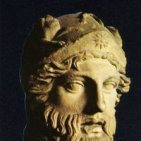
Bristol 138A Prototype with wheel covers
Xantippos posted a topic in Ready for Inspection - Aircraft
Here I comeback to the forum after a long time with this kit. Although not a wartime aircraft, it is one of the closest things you can find that actually didn't fought but looks like if it would have had. The main thing that separes these kit from the usual is; modified pilot to resemble the actual pilot who achieved the records, with a white suit, resembling a pulp fiction astronaut, and I sculped with putty the wheel protections on the wheels, which I think gives a great style, besides the chroming of the nacelle. This has been a family build - built by my father, wheel protections and pilot made by my brother, and painted, chromed and decalled by myself. I have made also a full review; http://toysoldierchest.blogspot.com/2015/01/frog-novo-bristol-138-research-plane.html -
While searching through my business storage unit I discovered (re-discovered?) this kit. (Yes I know I have a stash at my home, a stash at my business and the secret one that even SWMBO doesn’t know about at my business storage unit. I have a problem.) It is from Mikr Mir, a Russian company. The model is of a prototype from Moskalyev designated Cam-23. There is an absolute dearth of knowledge about this plane on the internet. From the little information I have found, it seems this was a proposed ground attack/support aircraft with a unique twist. The rear wheel was on a long arm running the length of the fuselage. In flight, it was extended down to the ground and the concept was it would be a crude terrain following device. Somehow a secondary arm attached to the main arm was directly linked to the elevator. When the wheel rolling on the ground compressed as the terrain changed upward, it would cause the elevator to automatically adjust the plane’s height to keep it at a constant ground hugging level. Believe it or not, this really didn’t get past the prototype stage; go figure. The first obstacle to this concept working is once the plane begins to climb, what brings it back down to the correct level when the terrain dips back down? Second, since this is a really small aircraft, the arm couldn’t have been longer than 20 feet. This doesn’t give a lot of reaction time to climb out of harm’s way. If the plane had gone into production, I think it would have helped the German war effort immensely. You have to wonder how this ever got further than a drawing board concept as someone, with a bit of sense, should have said no way this is going to work. Anyway, I found this kit staring at me, it looked really simple, and I thought I could work on it as I wait for various things to dry on my Neptune build. The parts count is not high. And the instructions are not exactly rocket science; that, and they are entirely in Russian. Looks like this will be a build strictly based on pictures and diagrams. I started off by painting parts while still on the sprues. Then it is off to build the tiny little cockpit. It looks like it consists of a floor, rear bulkhead, seat, instrument panel, control stick and rudder pedals. I started off with the seat. My initial thought with this kit was to detail it as much as possible as I have been shamed (maybe a bit too harsh there) by some nameless people (Nigel, Hendie, Vanja, Duncan) into being more aggressive in scratchbuilding than OOB. So I started with the seat and began to drill out the lightening holes. I then painted it a dull metal colour. My reasoning was this being a prototype, not a whole lot of effort would go to make sure the interior was protected from use, abuse and the elements. I also added some homemade seat belts from masking tape. Using the premise pilot safety probably not high on the list for this aircraft (look at the concept!!) and Russian, I just did seat belts and not a harness. Here is where I ran into trouble. I cannot even find a picture on the web for this plane, other than this kit’s box art. So my project of detailing the interior went nowhere as I couldn’t find a single reference picture for it. Back to OOB. I assembled all of the cockpit parts and placed them in the starboard fuselage. I buttoned up the fuselage and not a whole lot is visible of the small amount of work I did do. While I waited for the fuselage halves to dry, I started work on the engine cylinders. I thought I should put a bit of effort into them as they are exposed on the kit. I have never built a Mikr Mir kit before, but I must say on their engine parts, the molds are just superb. I am most impressed by the amount of detail they have been able to put in these small parts. For frame of reference as to the cylinder size, here is a photo of one of the cylinders next to the tip of a scalpel blade. Just really is amazing. The wings were built up next, along with the engine housing that goes on top of the fuselage. I then affixed the wings to the fuselage. There was a bit of sanding, scraping on both the wing mating surfaces and the fuselage mating surface to make these two fit together. Once the wings and fuselage were joined the engine housing was placed on top of the fuselage. This really is a very tiny aircraft. It is almost the same as putting a 1/144 kit together. In the next picture, I have borrowed a propeller blade from my Neptune build (also 1/72) to show exactly how small this plane is. The next step is attaching the pylons from the wing to the tail and making sure they are parallel and level. The elevator is then attached with the tail fin waiting its turn. The tail fin is in two pieces; a ¾ piece that fits on top of the elevator and extends down and a second piece comprising the rest of the lower elevator. These two pieces did not match in size at all. So, going by the diagram in the instructions, the lower piece was trimmed to fit the size of the upper piece. And finally, the landing gear struts were attached to the fuselage. This is a good stopping point for this kit. I will let everything set and harden as the kit is extremely fragile due to its size and the delicate rear pylons. In fact, the plastic pieces are so thin I switched from styrene cement to superglue when I started working on the pylons and rear section. I was afraid the plastic was not thick enough to withstand the dissolving qualities of styrene glue. The next step will be to paint the two tone camouflage scheme. If the cylinders are installed prior to this, it will be a nightmare to mask and all of them would be knocked off during the paint process. This will also give me time to try to devise some sort of exhaust system for this plane. All comments always welcome.
-
Been doing this kit for far too long and finally managed to get her finished today. So this is the Airfix 1/48 MkXII, pretty much OOB, just excluded the bump on the nose which covered a magneto drive on the production aircraft. Transfers are a mix of the kit roundels, and Tally-Ho and Fantasy Printshop for the serial codes and the yellow 'P'. Fitted a brass propshaft so that the prop spins too. Hope you like it;
-
Gloster F.9/40 Meteor Prototype DG202/G, pics are mine taken at RAF Hendon.
-
I picked this up from Ali at Telford, and have been working on it since. The aircraft went together really well, and if I'd been painting it one of the "painted" schemes, I'd have been done last week in all probability. As is my wont at the moment though, I chose the tricky scheme over which there's a lot of conjecture and gainsay, with the most reliable 1st hand description being that it was a "yukky green" on the first flight (thanks Edgar!). I was pointed at the AloChrom anodising substitute dip/paint that is still in use these days, and suddenly it all clicked. It's kind of a sour greeny/yellow, and it appealed to me, so I went for it. I also ignored the usual red panel in the chin, mainly because I felt like it The kit goes together very well, and I'd originally intended to pose the canopy open, so I didn't fettle the opener much, but after all that paint and varnish it didn't fit too well over the fixed section. I did a little sanding to improve the fit, but it's not too good I'm afraid. If I'd decided to go with a closed canopy from the outset, I'd have done it differently. No use crying over spilt milk though Painted in Alclad metallics with an overspray of a bespoke mix that I cooked up from their clear range, including green, yellow, and a littl blue, and lots of Aqua Gloss in between. The final finish was muted by their Light Sheen varnish, and some mild weathering done with oils. On with the pics - sorry about the dust, but I missed it after I'd polished the decals, and I'm too tired to re-take the photos again, as my back is killing me Good points: Quick build due to low part count and good fit Helpful instructions, with only the PE parts causing me to scratch my head Lovely detail in the nose area Choice of fit and finish depending on when in its career you want to model it All gear legs and the long pitot probe have metal cores Things to watch out for Wash the resin thoroughly, or your paint won't stick. Key the surface with a very fine sanding stick Fill the grooves in the backs of the gear legs if you aren't using the gear doors Make sure you fettle the canopy if you're posing it closed, and beware of the fit once the layers of paint are on if you intend to leave it open The decals are very thin, and the codes are printed individually, so you have to apply them separately. They can curl up on themselves if you're not quick once they're clear of the backing paper, so it may be an idea to slide them from the film to the model This is a prototype, which changes configuration almost daily, so check the scheme/period you want to model, and find out what was installed where at that point Bad points: Decals have a slight printing pattern in the blues which I suspect are too light Clear resin canopies aren't always the clearest when compared to vacformed alternatives Conclusion: A thoroughly enjoyable build, although mine had a hiatus while I mulled over the colours of the first flight "primer" scheme - whether I'm right or wrong is moot, but I'm quite pleased with the way it came out, although it's no show winner as usual, due to my little slip-ups. The build thread is here, the review here and thanks to Ali for the review sample. Review sample courtesy of
- 39 replies
-
- 19
-

-
Well I've been making the most of being stuck inside because of the rain... This is the obsolete Airfix Spitfire Mk.I (old tool ofc) and I had a bash at converting it. I admit, it is some what crude, however, it looks the part Modifications; Sanded all the raised panel lines and filled the panel trenches around the engine, The curved front canopy came from Airfix's XIX, the "un-blown" slidey bit and the rear bit (very technical) were thermoformed, The two blade prop was built from scratch, The rudder was altered, Undercarriage legs from the Heller XVI and the wheels had the spokes filled in, Scratch built tail skid, Cockpit interior had a control column and belts added, Pitot tubes came from bit of metal. Paint; Overall Hu90 after which I blended in various shades of greens and yellows to give the dirty zinc chromate look, Control surfaces painted with Hu11 for aluminium dope, The airscrew was painted with Citadel Snakebite Leather and given and oil wash, The cowl was painted with Citadel Chainmail Decals all came from spares other than the exhausts which were printed by myself (My thanks to Rick Brown for the jpeg). I think thats enough talking... Cheers, Ben.



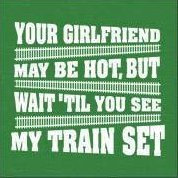
copy.thumb.jpg.d8f94c146f5d2da12880c4799901d6dc.jpg)
